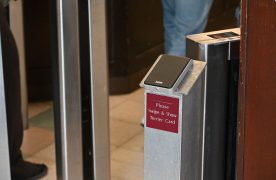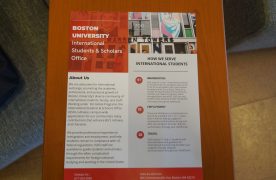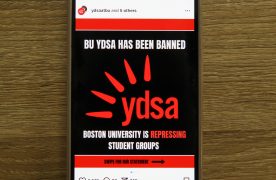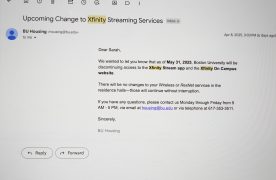New York had its presidential primary on Tuesday, and there are a lot of people who are not happy with how it went down.
The state has a closed primary, which means voters must be registered as a Democrat or a Republican, not an independent, to vote in one of those respective primaries. This isn’t an uncommon practice, as there are plenty of other states that restrict voting in a party primary to just the people in that party. You can debate the merits and problems of that system, but it’s not a general election, and parties are allowed to prefer that their members pick a nominee that represents them.
But what sets New York apart from the other states that run these closed primaries is how far in advance voters must register with a party. The deadline was last month for first-time voters and all the way back in October for those already registered to vote. That makes it more difficult to switch parties than in any other state. Republican frontrunner Donald Trump’s own children could not vote for him in the primary because they didn’t register in time.
This was also the first New York primary in recent years that was actually competitive. And no one would’ve known that six months ago. It is rather ridiculous that the deadline is so far out and is not a well-publicized due date. This system fared particularly poorly for Democratic candidate Bernie Sanders, who often fares better among independent voters than does his rival, Hillary Clinton.
Many independent voters were frustrated, and perhaps rightly so. But some took to calling a closed primary an act of voter suppression, likening it to voter ID laws. Let’s get some things straight here: These longstanding primary rules are frustrating in some cases, and they are a debatably ridiculous part of the system, but they are not voter suppression.
Voter suppression is a weighty term that is historically linked to racial issues and voter ID laws that discriminate against specific groups of people. Narrowing the path to voting eligibility through targeted requirements is very different from setting an early deadline. Take this example of a black man in Wisconsin who brought three forms of ID to the polls and still could not vote.
An open primary may be the better system, as President of the NAACP Legal Defense and Educational Fund Sherrilyn Ifill pointed out on Twitter. She added, “Just please remember what disenfranchisement really is.”
@Sifill_LDF just please remember what disenfranchisement really is. It would also be great if ppl cared about voting procedures enough ….
— Sherrilyn Ifill (@Sifill_LDF) April 20, 2016
It’s generally accepted that members of a political party ought to pick the person who will represent them in a general election. That’s how the party system works. Maybe there are larger questions here about how we ought to run elections or the pitfalls of a two-party system, but it’s unfair to claim discrimination as an independent voter who didn’t read the rules. Independents can vote in a general election if they so choose, but voting in a primary is not a constitutionally protected right. As the system currently stands, registering as an independent may sacrifice your right to vote in the primaries.
That’s not to say that the people unhappy with the system shouldn’t try to change it. Right now, in the midst of this election, is a good opportunity for those upset with the rules to go after them if they so choose. New York’s six-month deadline for registering is particularly ridiculous. But likening the wonky primary system to voter suppression abuses a term that has a very real past of discrimination that goes much further than setting an early deadline.
However, there were some other issues with this primary, the outdated rules notwithstanding. Around 120,000 active and inactive Democrats were purged from voter rolls in Brooklyn, among other problems reported with broken machines, delayed poll openings and the distribution of incorrect ballots. New York City Mayor Bill de Blasio approved an audit of the Board of Elections to figure out what happened, but so far no explanation has been offered.
Part of the problem may have been the unusually high turnout of voters, which the city seemed woefully unprepared for. But inexplicable purging of voters who registered on time is a much likelier indicator of potentially shady things going down in this process. Until someone can come up with a reasonable explanation for why people who followed the rules were unable to vote, it’s likely we’ll be hearing about this for weeks to come.











